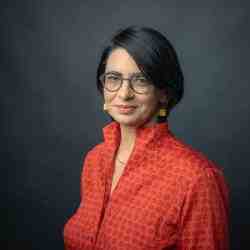Introduction
Still healing from the 2015 terrorist attacks, France faces increasing tensions between people from all religions. Samuel is pioneering a new and in-between way to deal with faith diversity in our society while respecting the core founding principle of secularism in the French Republic. Shaping a generation of open-minded, pacifist and engaged leaders on religious matters, he empowers hundreds of young people and opens interfaith dialogue in public schools to give a concrete reality to our capacity to coexist whatever we believe.
The New Idea
In France, the population self describes as: Muslims (7.5%), Jewish (0.5%), Catholic (63%) and unafiliated (28%) . There is an historical predisposition to a deep separation between the Church and the State (concept of “laïcité”), which effectively relegates religious activities to homes and places of worship. Religion remains a taboo subject that is hardly discussed in the public sphere.
To face France’s multi-dimensionnal “faith framework”, Samuel is creating a movement of “active coexistors” – young people from diverse beliefs, including atheists and agnostics, who learn through a continuous process of dialogue, collective action and reflection to remove barriers to “active coexistence” and to model and spread this mindset in schools, businesses and public authorities. Turned into ambassadors, 2,000 young people have already become the new and unprecedented voice of “active coexistence” in France.
In addition to the “active coexistence” methodology, Samuel is building the framework for his movement of “active coexistors” to grow. With a decentralized organization, and the use of core training contents on how to dismantle prejudices, he enables each person to take initiatives and develop leadership and entrepreneurial skills within autonomous local groups emerging all over France. Today, thanks to young leaders empowered to lead discussions, facilitate educative workshops and offer a new perspective on interfaith diversity, the self-multiplying movement initiated by Samuel has already impacted 45,000 students in secondary and high schools.
Without questioning secular founding principles and respecting the intimacy of one another, Samuel is widely recognized for his actions and expertise to get commitments to specify “active coexistence rules” at work and in the public sphere. He contributed to structure François Hollande’s official speech after Paris’ terrorist attacks (January, 2015), and is working closely with the government and official institutions. He has also started to replicate his approach of young leaders building their own Coexister communities in Belgium, Switzerland and the United Kingdom.
The Problem
Starting in 1895, Emiles Combes, Minister of Religious Communities and Public Instruction, and then Prime Minister led a very tough politic against the Church aiming at eradicating the Church involvement in the French Education. In 1904, religious congregations were not allowed to teach, and the French society got deeply divided on the topic. To cope with the backlash against this policy, the deputy Aristide Briand passed the famous French law in 1905 – that still applies today in France - to completely separate the State and the Church, and guarantee freedom of religious practice. Since then, a cleavage has persisted between two perceptions of secularism: a “total” secularism that tends to neutralize all kind of religious signs in the public space (inherited from Combes) and a more conciliatory perception that guarantee a neutral space where everyone can express his own faith under the law (inherited from Briand).
However, today, more than a century later, this law needs to exist in a different context from 1905. Indeed, the French society is more diverse than ever before, in particular since the important immigration wave in the seventies, mostly from North Africa countries. Today, France is the country with the most important Muslim and Jewish communities in Europe and there is an undergoing debate on how to deal with this new multi-dimensional faith framework. When France tends to privilege assimilation instead of recognition of individual identities and specific cultures in the public spaces, frustrations and violence emerge.
In addition, interfaith diversity is missing in the general debate on diversity. When other types of diversity regarding gender, race, or disability, get advocacy and are more and more perceived as strengths, interfaith diversity has very few defenders. Dealing with religions is a challenge in France, and faith is seen as a tricky matter that interferes with privacy and intimacy. Political representatives or private companies can hardly talk or act on interfaith issues without dividing, interfering on private and personal matters, and/or being borderline with the 1905 Law. Regarding education, faith and religions are rarely addressed at school, except from a historical, theoretical and neutral point of view. Consequently, there is a lack of knowledge, understanding and practical approach of religions in the French society.
Now, France is facing a twofold paradox: 1- while religion is becoming a more and more important feature of French society, it is less and less directly addressed in media, politics or education: we talk about “differences”, “secularism” or “cultural mix” but rarely about “religion” directly; 2- there is an increase of faith discriminations, communitarianism, silo-mentality and violent acts committed “in name of” or “against” religions in France; but, instead of joining efforts, each faith community is combating prejudices on its own side.
The recent terrorist attacks in Paris put the stress on an urgent need to recreate social link by changing people’s perception of diversity and interfaith topics, and represent a new opportunity to open interfaith dialogue in a positive way. The French particularities - great proportion of atheists and agnostics, well-anchored secularism principles, linguistic unity, highest number of Jews and Muslims in Europe – form an interesting context for a new model to emerge.
The Strategy
Coexister engages young people from different beliefs (including atheists and agnostics) and backgrounds, and particularly reaches the growing group of young people being sensitive about the limits of this culture of prohibition of an expression, or not, of a religion or conviction. To draw their interest and overcome the taboos and the old-fashioned image of religious questions, Samuel is using a young, dynamic and attractive communications strategy and relies mainly on social networks to recruit the members.
Each of them is then going through a one-year transformative track based on two main pillars: dialogue sessions and collectively-led solidarity actions. The weekly organized dialogue sessions help to discover and understand one another’s codes, communities and culture. Improving knowledge and self-reflection, they create the conditions to overcome stereotypes and prejudices. After learning about each other, members are encouraged to collectively implement solidarity actions every month to effectively experiment interfaith cohesion and create shared memories. Having a common goal of helping others indeed allows them to feel what unites them and overcome the differences they can have.
After at least six months spent in a local group practicing active coexistence, Samuel gives each “active coexistor” the opportunity to go through an additional training to be able to organize awareness sessions in schools. Equipped with specific knowledge, tools and methodologies to work on dismantling prejudices and share impactful testimonies of active coexistence, the young leaders then facilitate awareness sessions in both private and public schools to shift kids’ perception and prejudices on religions and secularism. These sessions “for young people given by young people” catch the attention of kids aged between 12 and 18.
To structure his movement and ensure everyone has an easy-to-access opportunity to experience “active coexistence”, Samuel has set up a decentralized model in which regional groups are autonomous and responsible for their actions, while following key principles designed at national level in order to respect diversity and ensure quality and coherence in the movement as a whole. For example, a new group can only be created by three leaders from different beliefs. Today, the movement counts 32 regional groups, each of them including on average 30 active members aged from 15 to 35; Samuel is targeting the creation of 500 local groups in France, one in each district. Moreover, a dedicated team is in charge to coordinate the development of the movement in Europe, which has already started in Belgium, Switzerland and the UK.
To enlarge his impact while reinforcing his economic model, Samuel is mobilizing Coexister members and alumni through a sister organization, “Convivencia”, to give really high valuable strategic advice on a consulting basis to both public and private organizations. Companies are accompanied to position themselves on interfaith issues, define clear rules and open dialogue to avoid tensions and frustration; for instance, Samuel supports the Fédération des Centres Sociaux, a network of a thousand public social centers in France. Through the work he is doing with Convivencia, Samuel aims at getting a significant cohort of organizations to set an example and change rules at bigger scale.
In addition to schools and organizations, Samuel is also using cultural channels to spread the “active coexistence” message; to do so, he develops two major events: a music festival named Festiv’all together (15,000+ attended the latest edition) and a “Night for laïcité” during which all the places of worship of a city are open to visit.
Eventually, Samuel is working on strategic partnerships with the government and public institutions to influence high-level decision makers. Playing a key role with the Economic, Social and Environmental Council and the Observatory of Secularism, Samuel is positioning Coexister as a legitimate organization to deeply change France’s position on interfaith, breaking the taboo and opening a new form of dialogue. In partnership with official institutions, Coexister already gathered public representatives and civil society champions through 4 interfaith-focused seminars and a major conference (2,000 participants), resulting in five recommendations for the government.
The Person
Samuel has been confronted with diversity and interfaith at a very young age, as he studied in a primary school where 300 students of 7 religions and 42 nationalities coexisted in a very enriching way. For him, it was like experimenting a mini-society where diversity is strength; and since then, he has aimed at reproducing it at a broader scale.
At 7, he makes his first step as an entrepreneur, creating the “club of five” to enable boarder pupils to go out and visit Paris from times to times. He then actively joins the scouts and participates in several majors events, including the Jamboree in 2007 where he realizes that a movement can bring together various communities to act with unity. At 16, he creates the first interfaith group after visiting the Auschwitz camp and meeting with a young Jewish and a young Muslin woman. One year later, the group becomes a movement following a first key operation: the first interfaith blood donation in Paris following recent attacks in Gaza. Benefiting from a large participation of more than 1000 people and great media coverage, Samuel officially launches the organization Coexister to build on this momentum.
While developing the core actions on interfaith awareness and active coexistence, Samuel raises the movement’s visibility and legitimacy through actions like the Interfaith Tour. In 2013, Samuel is among the 5 participants of the first Interfaith Tour, developed in partnership with Sparknews (Ashoka Fellow – Christian de Boisredon) and following the adventure of 5 young people with different beliefs (Catholic, Jewish, Muslim, atheist and agnostic) for a 10-month world tour to discover and map interfaith initiatives at all levels – economic, social, political etc. Repeated every two years since then, the Interfaith tour benefits from great media exposure, and is used as a pedagogical tool at school.
Recently, thanks to Coexister impact and force to federate, Samuel has integrated the Presidential program “La France s’engage” that supports key social innovation initiatives. Since October, 2015, he handed over the operational management of Coexister to focus on the main strategic development paths for his movement to keep growing in France and Europe, while strengthening Convivencia to massively infiltrate organizations.



